Introduction
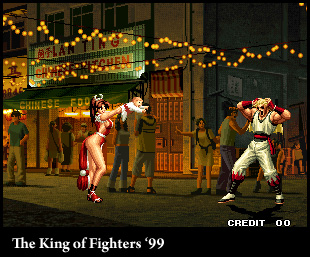
important lesson about family planning.
So you downloaded MAME and purchased licenses to every ROM for it. Now you have three thousand games, give or take a thousand. Infinite fun, right? Not exactly, but you do have access to a resource for learning some valuable lessons about game design.
Try playing through a set of games. For instance, all the ones in a given genre (brawler, fighter, puzzle, etc.) or all the games released in a given decade. This may take some time since there's an average of a hundred games in each genre. Go on - give it a try. We'll wait.
As you play, you may notice some patterns developing. For instance, many listed games are direct clones of others. Trimming these out may reduce the number of games to 2500 or so. Learning to spot direct clones will save you a lot of time and pain.
There are also variations of the same game - different ROM dumps, re-releases in different geographic regions, etc.
There are 47 (really - we counted!) different "Street Fighter 2" games , but by the time you weed out variants and direct clones, you get down to maybe five that have any discernable difference, and really only three that are worth playing.
Even once you've trimmed things down to this point, there are STILL a lot of games available under MAME. Still a good time, right?
Most arcade games are awful. In some cases this is because you're playing it without the input devices it came with. In others it's because the emulation isn't correct. The novelty of things moving on screen has worn off these days. And when you emulate, you have infinite money, so getting the most out of your quarter isn't a factor.
You already know most of the good arcade games. But there are some pearls of knowledge to be gleaned from the mountains of decades-old fetid oysters available in MAME.
If You Enter a Genre, Know The Norms
A brawler based on a comic book license. Could be good. Could be bad. Actually, it was both!
Spider-Man: The Videogame (Sega 1991) was a thoroughly mediocre brawler with platformer elements. There's not much here. You can't dash, you'll find a lack of weapons, and there's nothing to break that's full of VCRs, gems, or meat. It does have a pretty cool voice chip in it. There's a "trade health for super move" ability, but not much else.

Figure 2 - Remember that time when Spiderman beat up Shy Guys?
Oh, and you can put in more money at any time for more health. That's just the kiss of death to game play. Sorry, Gauntlet fans.
Hardware and graphics wise, Spidey is a solid game. Good art (because they licensed it from real artists), and great hardware - 416x226 display and 16k colors running on a 24MHz of combined CPU power. The sprites scale, move smoothly, and the world looks good.
The Punisher (Capcom 1993) is a much better game built on slightly worse hardware. It runs at 384x224 with 4096 colors, on only 20MHz of combined CPU power.
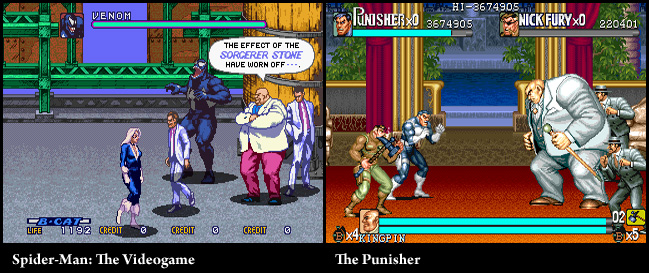
Figure 3 - In The Punisher, Kingpin is large enough you could hollow him out and use him as home. Awesome.
Capcom knows brawlers, and it really shows in Punisher. There's lots of stuff to smash, varied enemies and weapons you can pick up and use. There's meat hidden in almost everything, ready for you to eat to regain health. They make good use of The Punisher license to enable new gameplay - if enemies have guns, you can pull your own gun and blow them away. The second player can play as Nick Fury, super spy. The art is more clearly defined in The Punisher (see identical scenes above). On the left everyone is just chilling - maybe they're in a jazz club. On the right it's pretty clear that there's whuppin' about to go down.
The first room in Punisher is better than the first three levels of Spiderman combined. It's a bar room with a pool table and bags of money everywhere - which you can take with you. Inside the room are:
- Three chairs.
- A barrel, which contains a pizza you can get health from.
- Plants.
- An arcade machine with $1000 in cash inside it.
All of these things you can either pick up and beat people with, or just smash open with your fists.
What's the upshot from all this? What makes this more than just a case of bad design vs. good design?
Well, they didn't HAVE to design anything. All they had to do to make a pretty good game was copy what came before and change what they needed to make their game unique. It's not plagiarism to copy good design. No one gets sued for making round wheels.
Final Fight is the quintessential brawler, and Capcom released it in 1989. Final Fight defined the brawler. The concept of a brawler is you're a dude out to kick some ass, from left to right. In Final Fight, you could pick stuff up, break it on people, use it as a weapon, smash it open to get the delicious prizes inside. You could grab people, hurl them around, and there were different moves you could do to break up the monotony of punching.
So if you're going to release another game in that genre, you'd better have a good reason not to match the features that made the last one good. In Spiderman, it seems like they were just lazy - in the case of Final Fight, those features make the difference between an OK game and a great one. Spiderman is just OK.
But the Punisher pays attention to the lessons of Final Fight, and it shows.
Let's apply this to the modern gaming world. Consider Doom - the game that defined the FPS genre. Fast action, over-the-top violence, and solid game play. Frequently claustrophobic and very dark. Wildly enjoyable.
Serious Sam evolves the FPS genre by switching from maze-like levels to a linear progression of arenas and upping the enemy count by an order of magnitude. The developers stay true to their game's FPS roots by keeping the game play focused on mowing down hordes of bizarre enemies. It's clear that the developers understand the genre and are consciously choosing what to adopt and what to reject in making their game. And the game is still fun to play today.
Doom 3, however, is in the same boat as Spider-Man. When they designed Doom 3, it's as if they looked at Doom and said "hey, let's make a game like that." But the result is only similar in appearance. It misses the key game play elements - you spend basically zero time in clean confrontation with enemies; instead you get whacked in the back of the head by enemies you don't have a chance to see, and spend the rest of your time skulking around in pitch black corridors. Perhaps Doom 3 is a good example of another genre - but it's unclear what that would be, and its namesake (and perspective) condemns it to be a FPS .
If you're going to make a genre game, know the norms. Realize there's a precedent set by past games, and pick and choose what you're going to match, and where you're going to innovate. Where developers fail is when they enter a genre, but they don't build on what came before.
Business Model Does Affect Gameplay
The mechanism at work is this: as technology advances, it enables new kinds of games. These new games are cool, so people make them. The old business models often don't work with these new kinds of games. As a result, new business models are introduced to support them. The temptation of maximizing these new business models can pathologically affect game play design.
In the beginning, hardware wasn't advanced enough to have more than one screen worth of game. As a result, successful games optimized for a compelling one-shot experience that you would want to do again and again from the start. The business model leveraged this - it cost one token to play the game once. Pac-man, Asteroids, and Robotron are all good examples of this approach - they take very limited art resources and build rich, infinitely repeatable gameplay.
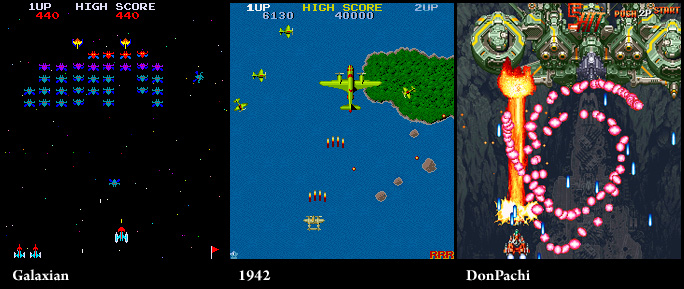
Figure 4 - Note there are more bullets on the screen in DonPachi than there are enemies on screen in Galaxian. 1942 forms a pleasant middle ground.
Galaxian (Namco 1979) is a classic, single-token-per-play shoot 'em up. When your game is over, you restart from the beginning. Although there are multiple levels, they're all just repeats of the first one at increased difficulty.
As technology advanced, it was possible to put more content into games. 1942 (Capcom 1984) has 32 levels that you fly through; different levels have different enemies moving in different patterns. There's also a finite amount of game - once you clear the levels, you've won. When your game is over, you can put in another quarter to restart the level you died on.
This means it's possible to complete the game in a (long) arcade play session, and that each level has to remain defeatable on a single quarter, but that it's also possible to extract more money from the player. The limit on each level's difficulty means that gameplay is unaffected by the business model - it's still necessary that it be possible to defeat each level within three lives.
DonPachi (Atlus 1995) was one of the first manic shooters, which means that in some cases there are more bullets on screen than empty space. In DonPachi, you may continue whenever you die and when you continue, you reappear immediately with a full load of bombs. Because it's no longer necessary to beat a level within a finite number of lives, there's no built-in limit of difficulty - the game can be infinitely hard, and sometimes is, because you always have the option of pounding through enemies with an avalanche of quarters.
And this has parallels in nearly every other genre of arcade game.
We see similar feedback loops happening in the modern game industry. MMOs are subscription based because of the overhead of maintaining server farms. The subscription business model is optimized when people play as long as possible. Therefore, gameplay is stretched out, resulting in the infamous level grind.
Downloadable content has recently become practical, and many games are already taking advantage of it. Micro transactions are one business model being developed to support this new content type and we can see its potential to affect design. There is rampant speculation about portions of games being held back so they can be sold via microtransactions later, like the horse armor in Oblivion. There are also more legitimate examples of being able to buy additional content, like the level expansion packs in Halo. We can also see microtransactions' effect in MMOs and web-based games, where, sometimes unofficially, you can short circuit your advancement by purchasing game items for real cash.
Will microtransactions cause a slump in the PC and console industries comparable to the mid 90s arcade slump? Only time will tell.
Gradation Of Skill
How do you differentiate skill when you can buy life with a quarter? Have the game recognize when you do something awesome.
An example - the POWs in Metal Slug 2 (SNK 1998). As long as you stay alive, POWs you've rescued will accumulate. At the end of the level, you're rewarded with a list of the names of the POWs you saved, as well as bonus points. There is also a combo effect at work here - getting all of the POWs is worth much more than getting most of them. Completing the level while still in a vehicle is an even bigger bonus. The game rewards 100% success much more than it does 99% success, and this is the motivation to replay the game until it is fully mastered.
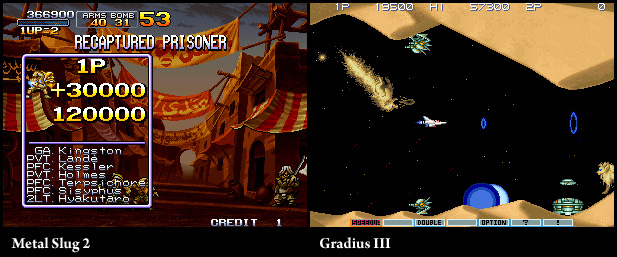
Figure 5 - Two different ways of rewarding skill.
A more subtle example is the music in Gradius 3 (Konami 1989). Whenever you die, the music restarts. As a result, only the truly masterful player gets to experience the entire song - less talented players are stuck with just the first few bars because they're always dying.
The gradated approach is a win on both ends of the skill spectrum. Beginners can experience and enjoy the game without having to contend with a steep skill curve. Experts have a way to differentiate themselves from the rest, and long-term goals to strive for that encourage repeat play. In either case, they're putting lots of quarters in the machine, so the game developer is happy, too.
Good Controls Are Always Worthwhile
June 1987. The arcade industry had recovered from a slump early in the decade. Atari was one of the top game companies. Out Run, Sky Shark, and Roadblasters are taking in quarters like mad. Rampage, Gauntlet, and Super Mario have all been out in the market for a few years.
Also released this year in Japan was Wonder Momo (Namco 1987). You're a Japanese magical girl. You fight things on stage and transform. Standard fare. Unfortunately, the controls bar you from enjoying the game. It's just unresponsive. This is especially bad since Mario has been out on the market for years. At this point in history, the problem of running around and jumping has been solved by mankind.
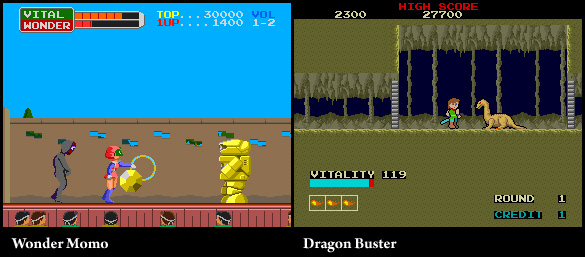
Figure 7 - Good ideas, bad execution.
Dragon Buster (Namco 1985), which predated Zelda 2 by a solid year, had the potential to be a true classic. It had tons of innovative features, like magic spells, one of the first life bars, branching levels, an overworld map, and even different moves like double jumping, downthrusts, and more. But its movement model suffers from poor transitions between walking and jumping, weird speed-related glitches, and no air control - which is especially bad because you frequently get juggled by enemies. The game is actually pretty good, but you have to overlook the fact that moving is pure pain. Although it's been ported a few times (most recently to the PSP), it never enjoyed the fame it deserved.
How do you make a game with compelling controls? The best approach is to make the most out of as little as possible. The Punisher, like many brawlers, has only a directional input and two buttons, yet there are upwards of a dozen moves you can execute. Almost every combination of input results in something different happening. And all this is pretty intuitive.
Contrast this with any arcade fighting game, which will have on average six buttons, and in which to do anything you have to combine one to three button presses with a series of directional moves. To actually be any good, you have to memorize lists of coded moves - which aren't displayed in the game and have to be learned from peers or magazines. And on top of this, really you only want to ever do like five different moves - fewer moves than there are buttons!
If you're going to add depth to a game, do it by making full use of a small number of inputs rather than adding more. Games like Dragon Buster and Wonder Momo had good concepts, but failed to execute on the basics, which cost them in the marketplace. Games like Final Fight, Punisher, and Outfoxies succeed because they respond well to basic input and make good use of the different combinations of those inputs.
Conclusion
MAME is an incredible opportunity for any budding game designer to really study their craft. Just the experience of playing through a bunch of games to find a fun one can be highly educational (as this article demonstrates).
What rewards are there for those who can stomach playing through hundreds of stinkers (and the odd pornographic Mah-Jongg game) to find the few bits of wheat amongst the chaff? They will gain an encyclopedic knowledge of the arcade industry, the ability to answer their own questions about game design with hard facts, and insights into the longevity of novelty.
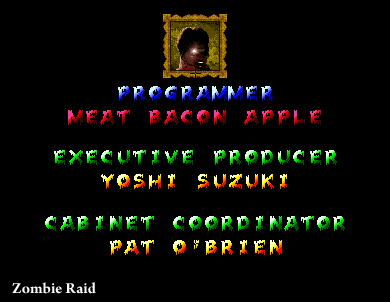
Figure 8 - The credits from Zombie Raid. Why is this guy called Meat Bacon Apple?



